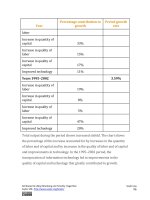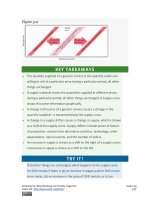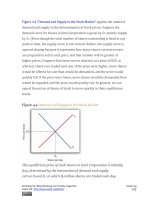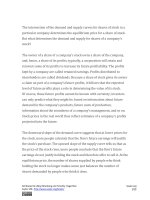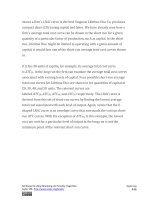Authors libby rittenberg 468
Bạn đang xem bản rút gọn của tài liệu. Xem và tải ngay bản đầy đủ của tài liệu tại đây (383.21 KB, 1 trang )
Later in this chapter, we will see how ease of entry is related to the
sustainability of economic profits. If entry is easy, then the promise of high
economic profits will quickly attract new firms. If entry is difficult, it won’t.
The model of perfect competition assumes easy exit as well as easy entry.
The assumption of easy exit strengthens the assumption of easy entry.
Suppose a firm is considering entering a particular market. Entry may be
easy, but suppose that getting out is difficult. For example, suppliers of
factors of production to firms in the industry might be happy to
accommodate new firms but might require that they sign long-term
contracts. Such contracts could make leaving the market difficult and
costly. If that were the case, a firm might be hesitant to enter in the first
place. Easy exit helps make entry easier.
Complete Information
We assume that all sellers have complete information about prices,
technology, and all other knowledge relevant to the operation of the
market. No one seller has any information about production methods that
is not available to all other sellers. If one seller had an advantage over
other sellers, perhaps special information about a lower-cost production
method, then that seller could exert some control over market price—the
seller would no longer be a price taker.
We assume also that buyers know the prices offered by every seller. If
buyers did not know about prices offered by different firms in the market,
then a firm might be able to sell a good or service for a price other than the
market price and thus could avoid being a price taker.
Attributed to Libby Rittenberg and Timothy Tregarthen
Saylor URL: />
Saylor.org
468
